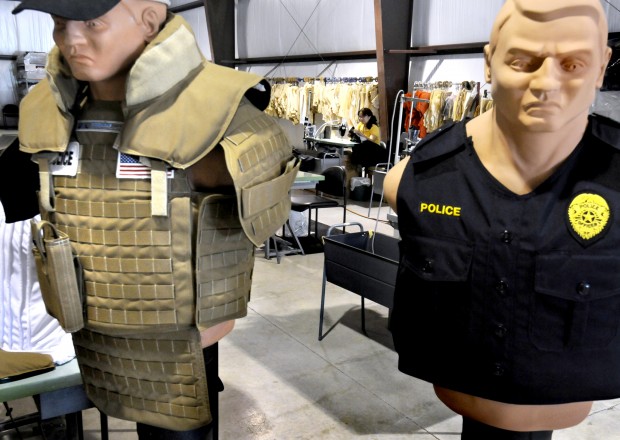Rv Armor and Flex Armor both offer superior protection for recreational vehicles. Rv Armor provides a seamless, waterproof coating that strengthens the roof, while Flex Armor is a sprayed-on protective layer that also enhances the roof’s durability.
As RV owners seek effective ways to safeguard their vehicles against the elements, they often turn to specialized products like Rv Armor and Flex Armor. These two innovative solutions are designed to protect RV roofs from water damage, UV rays, and other environmental hazards.
While both options offer reliable protection, it’s essential to understand the differences between Rv Armor and Flex Armor before making a decision. This article will compare the features, benefits, and applications of Rv Armor and Flex Armor to help RV enthusiasts make an informed choice for their vehicles’ protection.
Understanding Rv Armor
RV Armor is a revolutionary protective coating designed to safeguard your RV against damage from the elements. It’s a durable, weather-resistant solution that provides long-lasting protection for your vehicle. Understanding the features and benefits of RV Armor is crucial for making an informed decision about protecting your investment.
What is Rv Armor?What Is Rv Armor?
RV Armor is a specialized coating system applied to the roof of an RV to offer protection against leaks, UV rays, and other environmental hazards. It is a seamless, waterproof membrane that can be applied to various types of roofing materials, such as metal, TPO, EPDM, and fiberglass. The application process involves meticulous preparation, ensuring a perfect and lasting bond.
Features Of Rv Armor
- Seamless Waterproofing
- UV and Weather Resistance
- Flexibility to Accommodate Structural Movement
- Custom Application for Different Roof Types
- Durable and Long-Lasting Protection
Benefits Of Rv Armor
- Prevents Leaks and Water Damage
- Extends Roof Lifespan
- Reduces Maintenance Costs
- Enhances Energy Efficiency
- Increases Overall Resale Value of the RV

Credit: ravallirepublic.com
Understanding Flex Armor
Understanding Flex Armor
Finding the right protection for your RV is crucial, and one popular option is Flex Armor. This innovative solution provides a durable and long-lasting shield against the elements, helping to preserve the integrity and appearance of your vehicle.
What Is Flex Armor?
Flex Armor is a specialized protective coating designed specifically for RVs. It is custom-made to fit each unit, ensuring complete coverage and a seamless finish. This robust shield is applied to the roof of the RV, acting as a barrier against moisture, UV rays, and other environmental factors that can cause damage over time.
Features Of Flex Armor
- Custom-made for each RV
- Seamless and durable finish
- Resistant to UV rays and moisture
- Long-lasting protection
- Does not require annual maintenance
Benefits Of Flex Armor
- Custom Fit: Flex Armor is tailored to the specific dimensions of your RV, ensuring complete coverage and protection.
- Durable: The seamless finish and robust material provide long-lasting defense against the elements, extending the lifespan of your RV.
- Low Maintenance: Unlike traditional RV roofing materials, Flex Armor does not require annual re-sealing or maintenance, saving time and money in the long run.
- Warranty: Many Flex Armor installations come with a comprehensive warranty, offering peace of mind and added value.
Comparing Rv Armor And Flex Armor
Rv Armor and Flex Armor are both popular choices for protecting RV exteriors. While Rv Armor offers exceptional durability and weather resistance, Flex Armor provides flexibility and seamless installation. Choosing between these two depends on individual preferences and specific needs.
When it comes to protecting your RV’s roof, two popular options are RV Armor and Flex Armor. Both of these products offer durable and long-lasting solutions, but they have their differences too. In this article, we’ll be comparing RV Armor and Flex Armor in three key areas: durability, installation process, and protection level.
Durability
One of the most important factors to consider when choosing a roof protection system for your RV is durability. After all, you want a solution that can withstand the elements and provide long-term protection. RV Armor boasts exceptional durability with its 100% solid polyurethane membrane. This advanced material is designed to be highly resistant to UV rays, extreme temperatures, and environmental pollutants. Additionally, RV Armor is known for its ability to prevent leaks that can cause costly damage to your RV.
On the other hand, Flex Armor proves to be a tough contender in terms of durability. Using a thick but flexible polyurea coating, Flex Armor is built to handle even the harshest conditions. Its unique formulation enables it to expand and contract with temperature changes, preventing cracks and leaks. Flex Armor is also known for its resistance to UV rays, ensuring protection against fading and deterioration over time.
Installation Process
The installation process is another crucial aspect to consider when choosing between RV Armor and Flex Armor. RV Armor takes pride in its seamless installation process that eliminates the need for any adhesives or screws. Their skilled technicians apply the material directly onto your RV’s roof, ensuring a perfect fit and hassle-free installation. The absence of seams and fasteners means a reduced risk of water leaks and potential damage down the line.
Flex Armor, on the other hand, employs a similar installation process with some slight differences. Their expert team sprays the flexible polyurea coating directly onto your RV’s roof, creating a seamless and monolithic layer of protection. The application is quick and efficient, minimizing any disruption to your RV’s structure. Both RV Armor and Flex Armor offer professional installation services, ensuring a high-quality and efficient installation process for your peace of mind.
Protection Level
When it comes to protection, both RV Armor and Flex Armor deliver exceptional results. RV Armor’s 100% solid polyurethane membrane creates a thick and impermeable barrier, safeguarding your RV against any potential water leaks or damage. Its high-pressure application ensures a consistent and durable protection layer.
Flex Armor, with its flexible polyurea coating, offers a similar level of protection. The strong and resilient coating forms a watertight seal, preventing any moisture from seeping into your RV’s roof. Flex Armor also provides added insulation benefits, keeping your RV cooler in hot summer months and warmer during colder seasons.
In conclusion, RV Armor and Flex Armor are both reliable and effective options for protecting your RV’s roof. When choosing between the two, consider the specific needs of your RV and prioritize the factors that matter most to you, whether it is durability, installation process, or the level of protection provided. Ultimately, both options offer long-lasting solutions that can extend the lifespan of your RV and provide peace of mind on your travels.

Credit: calrvspecialists.com
Choosing The Right Armor For Your Rv
When it comes to protecting your beloved RV, choosing the right armor is crucial. It’s not just about adding a layer of protection but also ensuring that your RV can withstand the rigors of the road. Two popular options that RV owners often consider are RV Armor and Flex Armor. In this article, we’ll explore the considerations, cost comparison, and real-world customer reviews to help you make an informed decision for your RV.
Considerations
Before diving into the armor options, it’s important to consider a few key factors. First and foremost, think about the type of protection your RV needs. Are you primarily concerned about preventing leaks and water damage, or are you looking for added protection against impacts and scratches?
Additionally, consider the climate in which you usually travel. If you frequently encounter extreme weather conditions, you’ll want to choose an armor that can withstand these challenges. Another important consideration is the installation process. Some armor options may require professional installation, while others offer DIY-friendly solutions.
Cost Comparison
Cost is often a significant consideration for RV owners. Let’s compare the cost of RV Armor and Flex Armor to help you get a clearer picture:
| Armor | Cost |
|---|---|
| RV Armor | $X per square foot |
| Flex Armor | $Y per square foot |
It’s important to note that the cost may vary depending on factors such as the size of your RV and any additional customization options you choose.
Real-world Customer Reviews
When making a decision about the armor for your RV, hearing from other RV owners can provide valuable insights. Here are a few snippets of real-world customer reviews:
- “I’ve had RV Armor installed on my RV for several years now, and it has been a game-changer. Not only does it provide excellent protection against leaks, but it also looks great!” – John D.
- “Flex Armor was the perfect choice for my RV. The ease of installation was a big selling point for me, and it has exceeded my expectations in terms of durability and protection.” – Sarah T.
- “After researching different armor options, I decided to go with RV Armor. The professional installation was worth every penny, and I have peace of mind knowing that my RV is well-protected.” – Mike W.
Customer reviews can help you gauge the overall satisfaction and performance of each armor option. However, it’s important to consider multiple reviews and weigh the pros and cons based on your specific needs and preferences.

Credit: rvlove.com
Frequently Asked Questions For Rv Armor Vs Flex Armor
What Is The Difference Between Rv Armor And Flex Armor?
Rv Armor and Flex Armor are both top choices for RV roof protection. The main difference lies in their composition. Rv Armor is a seamless, rubber-based system, while Flex Armor is a spray-on, bead-based product. Both offer excellent durability and water resistance, so the choice ultimately depends on personal preference and budget.
Does Rv Armor Provide Better Protection Against Leaks?
Yes, Rv Armor is designed to provide superior protection against leaks. Its seamless, rubber-based composition forms a watertight barrier across the entire RV roof, eliminating potential weak points for leaks to occur. This makes Rv Armor an ideal choice for RV owners who prioritize leak prevention and long-lasting roof protection.
Is Flex Armor More Cost-effective Than Rv Armor?
Flex Armor is generally considered to be more cost-effective than Rv Armor. The spray-on application allows for precise coverage, which can potentially save on material costs. Additionally, because it can be applied directly over existing roofing materials, there is no need for costly removal or tear-off.
However, it’s important to consider individual needs and preferences when determining cost-effectiveness.
Which Option Offers Better Resistance Against Uv Rays?
Both Rv Armor and Flex Armor offer excellent resistance against UV rays. Rv Armor’s rubber-based composition has UV stabilizers that provide added protection against sun damage. Similarly, Flex Armor’s bead-based composition also includes UV inhibitors to shield the RV roof from harmful UV radiation.
Ultimately, both options are designed to withstand prolonged exposure to the sun.
Conclusion
Overall, both RV Armor and Flex Armor offer durable and long-lasting protection for RV roofs. While RV Armor provides a thicker coating and boasts a longer warranty, Flex Armor proves to be equally efficient in preventing leaks and retaining its durability.
Ultimately, the choice between the two depends on individual needs and preferences. Whichever option you choose, both products serve as excellent solutions for protecting your RV’s roof and ensuring its longevity.


